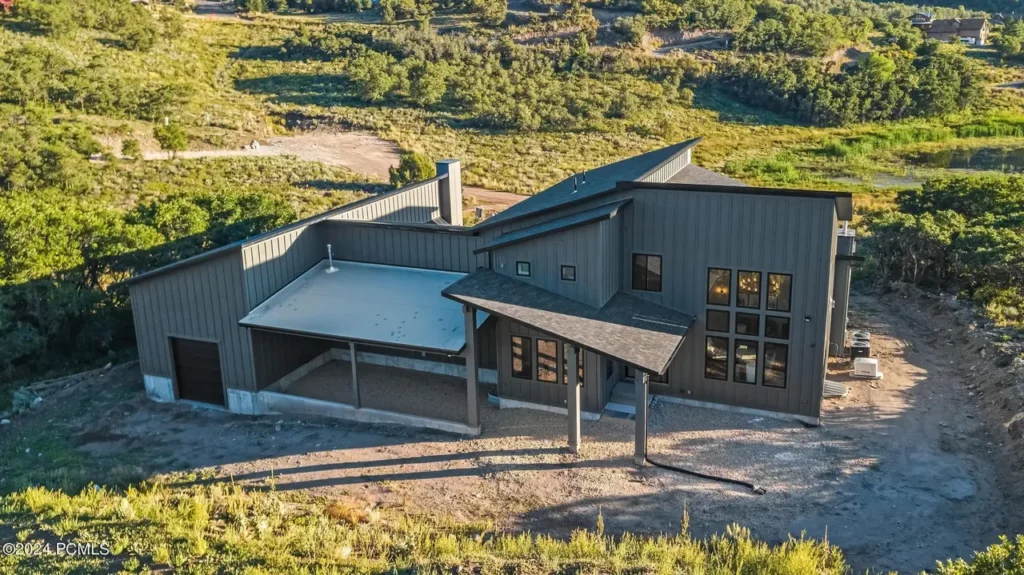Navigating the Septic Design Approval Requirements Process in Utah
Are you struggling to obtain your septic system permit and move forward with construction in Utah? Navigating the septic design approval requirements process can be challenging, especially when dealing with sewage, water, and environmental health regulations. This guide will help you understand the importance of septic system design, gather the necessary documentation, and collaborate with professionals to ensure your septic tank meets all standards. By following these steps, you can streamline approvals and avoid costly delays, ensuring your project progresses smoothly.

How Anderson Engineering Can Help with Your Septic System Design
Navigating Utah’s septic system design and approval process can be overwhelming, but you don’t have to do it alone. Anderson Engineering specializes in creating permit-ready septic system designs that comply with Utah’s stringent regulations. Our experienced team works closely with county health departments, environmental health specialists, and contractors to ensure your project meets all requirements for a smooth approval process.
With our expertise in soil testing, system layout design, and regulatory compliance, we take the stress out of septic system permitting. Whether you’re a homeowner, developer, or contractor, we provide tailored solutions that save time, reduce costs, and protect Utah’s valuable water resources.
Call to Action: Schedule Your Free Consultation Today!
Ready to move your project forward with confidence? Contact Anderson Engineering to schedule a free phone consultation. Our team is here to guide you through every step of the septic design and permitting process. Click here to schedule your consultation now and let us help you turn your vision into a reality.
Understand the Importance of Septic Design Approval
Septic design approval ensures proper soil suitability, drainage, and safeguards drinking water and environmental health. In Utah, protecting water supply is critical, requiring collaboration among designers, local health departments, and property owners. Early inspection of septic systems prevents issues like flood risks and contamination, ensuring the successful implementation of disposal systems.
Define What Septic Design Approval Entails and Its Significance
Septic design approval involves creating detailed plans for septic systems, including pipes, tanks, and sewage treatment components, to manage wastewater on a property. In Utah, compliance with local health and environmental regulations is essential to protect the water supply and prevent contamination. Approval procedures help ensure clear communication with local authorities and efficient project execution.
Compile Site Plans That Meet Local Zoning Requirements
Detailed site plans that comply with local zoning requirements are crucial for septic system design approval in Utah. These plans must outline the location of the septic system relative to property boundaries and structures, ensuring adherence to health and safety standards.
Include Soil Tests and Percolation Reports
Conducting soil tests and percolation evaluations is essential for determining soil capacity to absorb and treat wastewater. These reports help designers ensure that the septic system adheres to Utah’s environmental health standards and performs effectively under site-specific conditions.
Prepare Detailed Plans of the Proposed Septic System
Accurate septic system design plans demonstrate compliance with Utah’s building codes and environmental regulations. These plans must include details about pipes, tanks, valves, and pumps, ensuring proper gravity flow and effective wastewater management.
Ensure All Permits Are Up to Date
Maintaining current permits with local health departments is critical for a seamless approval process. Verifying documentation, such as PDF site layouts and prior approvals, prevents delays and ensures compliance with Utah’s stringent requirements.
List Required Approvals From Health and Environmental Agencies
Approvals from Utah’s local health departments and the Utah Department of Environmental Quality (DEQ) are essential. These agencies review septic system designs to confirm adherence to sewage and wastewater management regulations, protecting drinking water and public health.
Create an Application Checklist for Efficiency
Creating a comprehensive application checklist streamlines the septic design approval process. Include site plans, soil tests, and PDF versions of the system layout to ensure a smooth submission. Tools like CivicPlus can provide guidelines to simplify compliance.
Collaborate With Professionals for Your Septic Design
Engaging certified septic system designers, environmental health specialists, and contractors ensures that septic systems meet all requirements:
- Designers create efficient septic system layouts.
- Soil scientists provide accurate soil test data.
- Contractors install systems with critical components like check valves and pumps.
Schedule Preliminary Meetings With Regulatory Bodies
Preliminary meetings with Utah’s local health departments and the Utah Department of Environmental Quality (DEQ) allow property owners to clarify application requirements, resolve potential issues, and ensure compliance with regional standards.
Submit Your Septic Design Plans Correctly in Utah
To correctly submit septic design plans:
- Review Submission Guidelines: Use county websites or tools like CivicPlus for the latest regulations.
- Complete Necessary Forms: Ensure all forms are signed and accompanied by required PDFs.
- Attach Supporting Documentation: Include soil tests, site plans, and system layouts.
- Pay Applicable Fees: Expedite processing by paying fees on time.
- Maintain Records: Keep copies of submitted application documents for future reference.
By adhering to these steps, you can ensure a compliant and efficient approval process while protecting Utah’s environmental health and water supply.
This revision incorporates all specified terms while maintaining a clear and localized focus for Utah’s unique regulatory environment.
Statewide Resources for Designing and Approving Septic Systems in Utah
Utah property owners and professionals seeking to design and install septic systems must navigate complex regulations to ensure compliance and environmental safety. To simplify the process, we’ve compiled a list of essential statewide resources, including the Utah Department of Environmental Quality (DEQ) and key tools for wastewater management and septic system design. These resources provide valuable guidance for permitting, certifications, and adherence to Utah’s stringent environmental health standards.
Comprehensive Guide to County Health Departments for Septic Systems in Utah
Navigating septic system regulations often requires working directly with local county health departments. Each of Utah’s counties has its own guidelines and contact points for septic design approval, permitting, and inspections. This table provides links to all county health departments in Utah, along with relevant resources to help property owners and professionals comply with local requirements. From soil testing to environmental health services, these departments are critical partners in ensuring your septic system meets regional standards.





